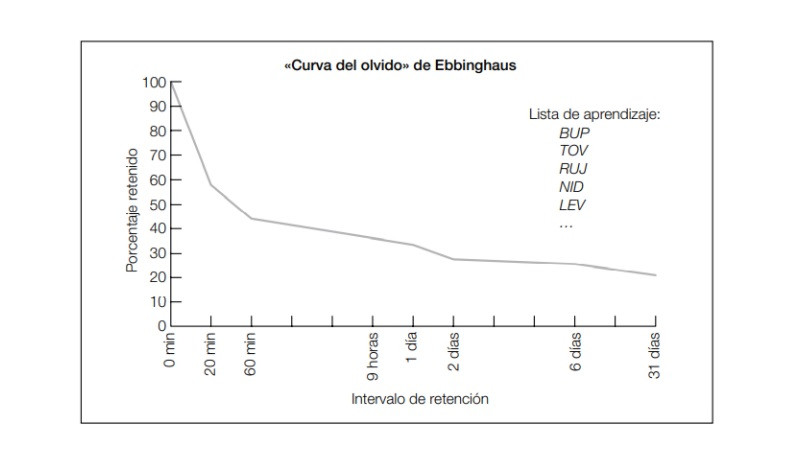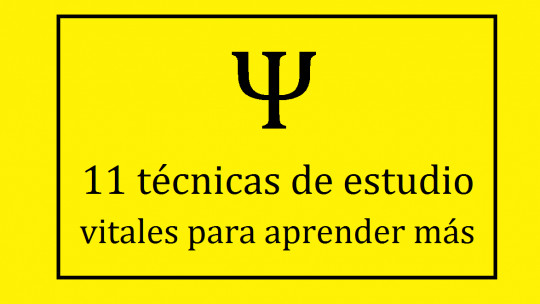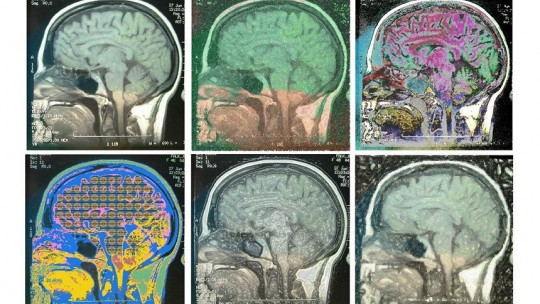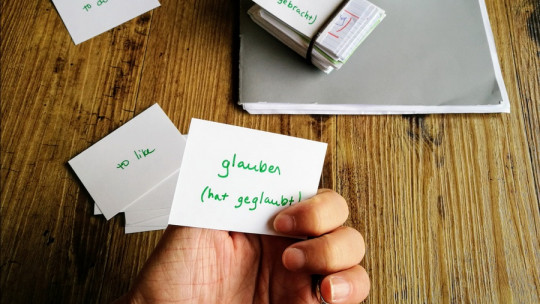
Some research shows that the way most students typically study is not the most effective.
So, the strategies most used by students are also the most inefficient such as rereading (reading the syllabus over and over again, reviewing), highlighting (underlining, marking the most important parts of the text) and summarizing (synthesizing the original text, reducing the content into fewer words).
It’s not that they are an absolute waste of time, but they are not very good in terms of cost-benefit. There are ways to study that are more efficient.
It is true – at least in part – that the more hours you study, the more likely you are to get good grades; However, getting good grades is not only reduced to studying a large number of hours, because The quality of the study is more important than the number of hours dedicated to studying
The keys to studying efficiently
Studying inefficiently not only wastes a lot of time, it is also very frustrating to spend a lot of time on something and not get the results you want. This frustration can take a toll on our motivation, and studying requires motivation, especially when we don’t like the subject very much or it is difficult or both at the same time. That is why it is important to use a study methodology that is effective
So… What can you do to better retain the information you are trying to learn and thus achieve meaningful learning?
To answer this question, it is important to first know a little about some notions about memory.
The phases of the memorization process
When we talk about memory we can distinguish between sensory memory, short-term memory and long-term memory. As this is an article that aims to give some keys to study better and improve learning processes, we are going to focus on Long term memory
Long-term memory corresponds to that warehouse where we keep the information that we can recover some time after having stored it, either on the day of the exam or when we have to put into practice in the world of work what we learned at school, the academy, the university, etc.
Memorizing is introduce certain information into the brain, store it and then be able to retrieve this information (bring it to consciousness). The phases of this memorization process are the following:
The study techniques mentioned above (rereading, highlighting, summarizing) do not take into account retrieval, and They focus solely on trying to fit as much information as possible into the memory store but they don’t worry about trying to get that information out of the warehouse.
However, there is research that indicates that what is most effective when trying to memorize is trying to extract the information, that is, test ourselves
Active Recall (The Active Recall Technique)
Most students only test themselves at the time of the exam, before that context they spend a large amount of time reading their notes, underlining them, making summaries, concept maps, schemes and diagrams, drawings or other systems to try to learn the content.
But what is most useful to strengthen the memory is the technique known as Active Recall, that is, try to evoke the information, remember it, explain it to a partner, answer self-assessment questions, etc In short: what works to remember is to test yourself, to remember actively.
Every time we put ourselves to the test our mind learns from the mistakes we have made and the memory becomes stronger and is stored more deeply. You are less likely to make those mistakes again.
The repeated process of introducing information into our memory system and then trying to extract this information, when repeated over and over again, gradually shapes the memory. Every time we try to get the information, the memory changes the information is sculpted, it takes shape like a sculpture, making this memory increasingly deeper and more accessible.
It’s like going through a labyrinth: the first time we will get lost in the labyrinth, we will go around looking for the exit, we will become disoriented, we will take detours, but these mistakes will help us mentally trace the correct path, which will be recorded in our memory. Then we can go through the maze making fewer mistakes and it will take less time to travel the path.
This metaphor, applied to memory, means that the brain will have less difficulty accessing that information and therefore You will make fewer mistakes and you will also do them faster
The forgetting curve
Our mind tends to forget because our memory needs to discard part of the information (we cannot save everything, it would be impossible). The rate at which our memories disappear does not follow a linear progression; It is not constant like the dripping of a faucet, the tendency for the material to disappear is more like an initial downpour followed by a light drizzle. That is, we forget a large proportion of the information we had stored immediately after studying and then, slowly, we forget more and more material as time goes by.
The more time passes from the moment the information was saved, the more of this same information we will have lost This phenomenon is known as the forgetting curve.
If you have ever studied at the last minute, it will have happened to you that on the day of the exam you remembered quite well what you had studied, the next day you had forgotten a large part of what you knew on the day of the exam, two weeks later you barely remembered anything and the next After a month you had practically forgotten everything you knew how to answer in the exam. This is due to the forgetting curve.

I’ll give you another example. Do you remember what you had for breakfast yesterday? And lunch two days ago? And how about I ask you what you had for dinner exactly 6 months ago? You can probably answer the first question without problems but I would be very surprised if you could tell me what you had for dinner exactly 6 months ago, since the natural memory process: that tendency to forget, will have buried the memory
All this without taking into account another important aspect to understand memory and learning, and that is that you probably do not pay attention to what you had for dinner 6 months ago because it is not a very relevant issue. And the less attention you pay to something, the less likely it is to remain stored in memory.
But, returning to the example, if in these six months you had been frequently repeating the memory of that dinner, today you could answer me in detail: “It was May 6, I had dinner with my boyfriend in an Italian restaurant, we shared an octopus salad with a honey and mustard vinaigrette and we drank a sparkling wine; I remember that for the main course he ordered a prosciutto pizza and I had stuffed pasta, they were some cuori di zucca with funghi porcini; and we didn’t order dessert. Have no doubt, if you had dedicated some time every day to remembering that dinner, today you would remember all those details.
Spaced Repetition
We already know that we forget most of what we learn within a few minutes or hours of studying it (sorry, bad news, memory is like that). This can be very discouraging, but here comes the second technique to improve the effectiveness of the study: Spaced repetition.
This technique – which is perfectly compatible with Active Recall – consists of reviewing the study to refresh your memory. To counteract the trend of this forgetting curve We will include a series of reviews, increasingly spaced out over time It is like giving the brain that “dose of memory”, resetting the forgetting process.
So one can ask: Is it better to delay the moment of self-assessment more and more or, on the contrary, should I be constant in the time I leave between review and review?
Some time ago it was believed that leaving more and more time between review and review was the best way to distribute study to improve learning; However, subsequent investigations have shown that this is not the case.
Apparently, the most appropriate way to distribute this repeated practice is to take a first self-assessment exam (but not immediately after having studied, but rather leaving time) and then, add self-assessment tests but not space them more and more, but at a constant pace
Final comments
Several conclusions are derived from all this, but the most important are that we cannot leave the study at the last minute and that we should not limit ourselves to reading, underlining or adopting other passive strategies, since to learn it is much more effective to “activate” it in our memory. the information that we have put into it than trying to put more and more information into it.
This way of studying will bring us closer to our goal of passing the exam and really consolidate learning so as not to forget it long after the exam.
However – and you will have already realized this while reading the text – this form of study requires meticulous organization, perseverance and amount of time, and in turn demands greater effort, since it is easier to read over and over again than be tested.
Procrastination and inefficient study techniques are the student’s greatest enemies, but other factors that we have not mentioned in this article and that have a notable weight are also determining factors. These are some examples: an inadequate diet (especially one rich in sugar), a sedentary lifestyle, not being well hydrated, high levels of stress (especially if they are sustained over time), drug use, a rest insufficient, unrealistic expectations, inadequate self-demand, low motivation and test anxiety, to name a few.
Definitely, The brain needs a series of conditions to function optimally and any situation that involves a reduction or interference in the performance of our brain will be detrimental to our study.
Author: Cristian Mantilla Simón, psychologist at Centro Rapport Psicología.








